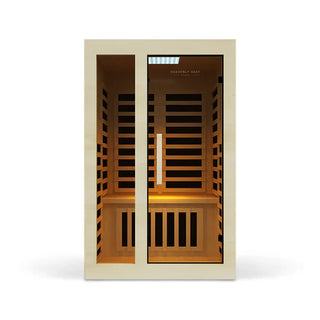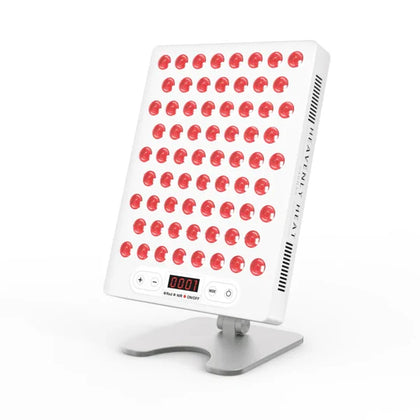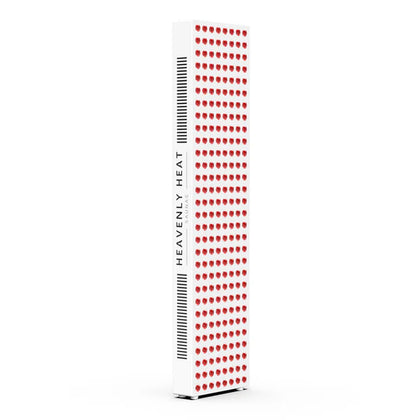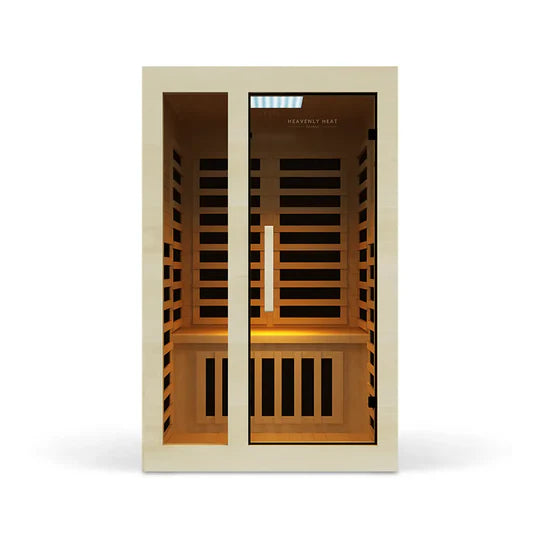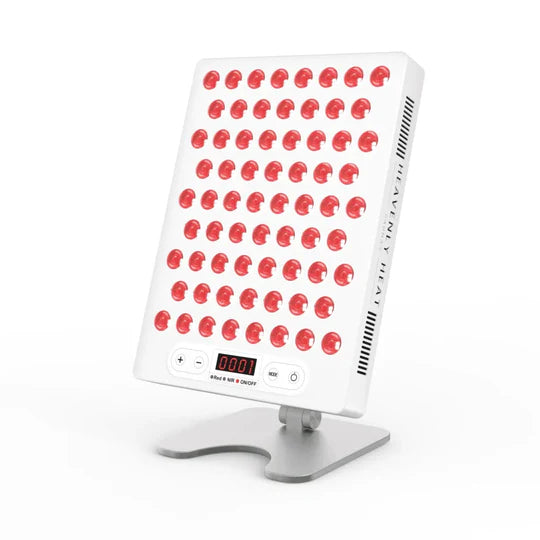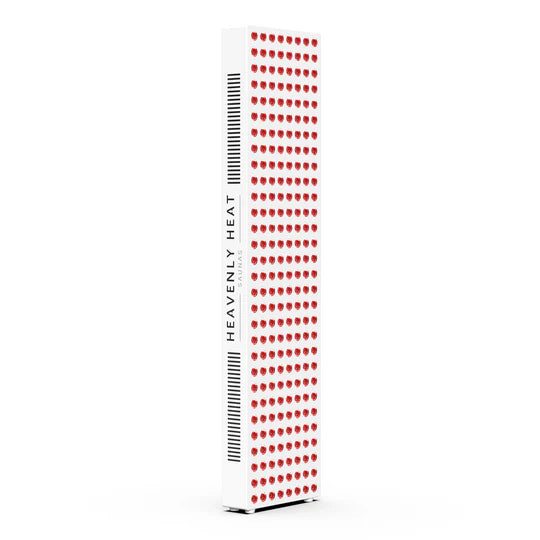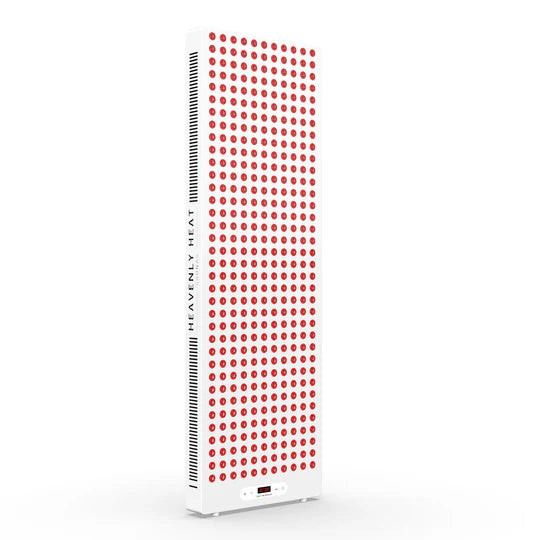Is it Better to Do Red Light Therapy Before or After Workout?

After a workout, you may wonder, “Should I do red light therapy before or after?” This is an essential question because the timing of your session can impact your recovery, muscle performance, and energy levels.
In this guide, we’ll cover everything you need to know about optimizing your red light therapy session around your workout, helping you achieve the best results.
Benefits of adding Red Light Therapy to your Workout Routine
It is Effective for Delayed onset muscle soreness
- Red light therapy helps with the soreness you feel after working out: Adding red light therapy to your workout routine can make a noticeable difference by helping to reduce delayed onset muscle soreness (DOMS) after intense exercise.
- It’s easier to stick to your workouts when your muscles don’t hurt as much: This soreness can be a hurdle in maintaining consistent workouts, but red light therapy offers relief that helps you stay on track with your fitness goals.
- Studies show red light therapy really does reduce muscle soreness: A study investigated how 830 nm LED therapy (LEDT) affects muscle soreness and found that it significantly reduced pain for participants at 48, 72, and 96 hours after exercise.
- People had less pain and moved better after using red light therapy: Those who received LEDT had higher pain thresholds and better joint mobility compared to a placebo group[ 1 ].
- Recovering faster means you can stay active without long breaks: By managing post-exercise soreness, red light therapy allows you to recover faster, making it easier to stay active and enjoy more productive workouts.
Accelerated Tissue Repair
- Red light therapy helps your muscles heal faster: Adding red light therapy to your workout routine can speed up tissue repair. This means your muscles recover quicker, and you feel less sore after exercise.
- It repairs your muscles by working deep inside your cells: Red light therapy supports healing by working at the cellular level. It helps fix the tiny muscle fibers that get damaged when you work out.
- Studies show it greatly improves healing: One large study looked at 28 clinical trials with over 1,400 people. It found that red light therapy improved healing by 93% in people with slow-healing wounds like diabetic foot ulcers.
- It boosts blood flow and reduces pain during recovery: The same research found red light therapy helps the body heal faster by increasing blood flow and lowering pain, both important for faster recovery after workouts.
- That’s why it makes sense to add it to your fitness routine: With faster healing, less soreness, and better recovery, red light therapy can be a powerful part of your post-workout recovery plan.
Boost muscle strength
- Stronger muscles help you lift more and recover faster: Boosting muscle strength improves your ability to lift heavier weights, do more reps, and recover quickly after workouts. This gives you better overall performance during training.
- Getting stronger helps you see faster results: When your strength improves, it's easier to push past workout plateaus. That means you can make more progress in less time and stay motivated.
- Red light therapy can help build muscle strength: Research shows that using red light therapy (also called Photobiomodulation) before or after exercise supports muscle strength and recovery.
- It helps your muscles grow and feel less sore: Red light therapy can increase muscle mass, reduce inflammation , and lower oxidative stress, helping your muscles feel better and grow stronger after workouts.
Reduced Inflammation
- Red light helps your body recover faster: Adding red light therapy to your workout routine can help reduce inflammation , which is key to faster recovery and less discomfort after intense exercise. When inflammation goes down, your body heals quicker, so you can get back to training sooner.
- It calms down sore muscles and joints: Red and near-infrared light reach deep into your muscles and joints. This light gets absorbed by your cells and triggers natural reactions that reduce stress and swelling inside the body.
- Science shows it really works: Studies on red light therapy (also called photobiomodulation) show that it lowers inflammation markers in the body. This includes areas most affected by exercise, like your joints, tissues, and muscles.
- You feel less sore and ready to move again: By reducing inflammation, red light therapy helps cut down on post-workout soreness. That means you feel better, move easier, and stay more consistent with your workouts.
Improved Blood Circulation
- Good blood flow helps your muscles work better: When your blood moves more efficiently, it brings more oxygen and nutrients to your muscles. This helps them perform stronger during workouts and recover faster afterward.
- Red light therapy helps open up your blood vessels: Using red light at 670 nm has been shown to widen your blood vessels, a process called vasodilation, which allows blood to flow more freely through your body.
- It works by triggering a natural blood-flow booster in your body: This widening happens because red light helps release a substance called RSNO from your blood vessels. This helps relax the vessel walls and improves circulation.
- Better circulation means faster recovery after workouts: With more oxygen and nutrients reaching your muscles quickly, your body can repair itself faster, which means less soreness and quicker recovery after exercise.
Improve Sleep
- Red light therapy helps you sleep better after workouts: Adding red light therapy to your workout routine can enhance your sleep quality. Better sleep means faster recovery, more energy, and improved overall performance.
- A real study showed it actually works for sleep: Researchers at the China Institute of Sport Science studied how red light affects sleep and athletic recovery using 20 female athletes.
- Just 30 minutes of red light at night made a difference: Ten athletes used red light therapy for 30 minutes each night for two weeks, while the other ten didn’t receive any treatment.
- It improved sleep, raised melatonin, and boosted recovery: The results showed better sleep quality, increased melatonin (your body’s sleep hormone), and even improved endurance, all from a simple, non-invasive therapy.
Tips for combining red light therapy with the workout
Timing matters
- Doing red light therapy before your workout helps you perform better: Using red light therapy right before exercising increases blood flow to your muscles, which helps you move better and possibly lift more or go longer. Try it for 10–15 minutes before starting your workout.
- Using it after your workout helps your body recover faster: Doing red light therapy after you finish exercising can reduce muscle soreness and help your body heal quicker by lowering inflammation.
- The best time of day depends on what you need: If you want a boost of energy, use red light therapy in the morning . If you want better recovery and relaxation, it’s better to do it in the evening .
Focus on right areas
Targeting the right areas makes red light therapy more effective. Focus on the muscles you’re working out to enhance recovery and reduce fatigue.
For example, use it on your legs after a run or your shoulders after lifting. If you’re looking for general recovery, larger areas like your back or thighs are great choices.
Pay attention to where you feel tension or soreness to decide which areas need more focus.
Consistency is the key
Sticking to a routine is crucial for maximizing the benefits of red light therapy. Regular sessions, three to five times a week, can improve both performance and recovery.
Pairing red light therapy with workouts consistently helps your muscles adapt faster and recover better.
The ideal frequency depends on your goals, but committing to a schedule ensures long-term results and keeps your fitness progress on track.
Should You Do Red Light Therapy Before or After Workouts?
- Doing red light therapy with workouts makes your results better: Red light therapy can boost your fitness routine by reducing inflammation, improving blood flow, increasing muscle strength, helping your body repair faster, and easing muscle soreness after a workout.
- Using it before a workout helps your body warm up and feel ready: When done before exercising, red light therapy helps loosen stiff muscles and prepare your body, making it easier to move and reducing the chance of injuries.
- Using it after a workout helps your body heal and recover faster: Red light therapy after a workout helps your muscles recover, reduces pain and tightness, and supports faster healing by calming inflammation.
- The best results come when you use it both before and after your workout: To get the most out of red light therapy, use it for 10–15 minutes before and after exercising. Just wait at least 10–15 minutes after your workout before starting your red light session.
The Takeaway
- Red light therapy can be used both before and after workouts for optimal muscle performance and recovery.
- Applying red light therapy before exercise helps prepare muscles and reduce stiffness, while post-workout therapy accelerates recovery.
- Consistent use of red light therapy can significantly reduce muscle soreness and inflammation after workouts.
- For best results, use red light therapy for 10-15 minutes both before and after your workout session.
References
- https://onlinelibrary.wiley.com/doi/10.1155/2021/6690572
- https://www.sciencedirect.com/science/article/abs/pii/S1744388124000793
- https://onlinelibrary.wiley.com/doi/10.1002/jbio.201600176
- https://www.aimspress.com/article/10.3934/biophy.2017.3.337
- https://www.sciencedirect.com/science/article/pii/S1011134421000919
- https://meridian.allenpress.com/jat/article/47/6/673/111318/Red-Light-and-the-Sleep-Quality-and-Endurance




